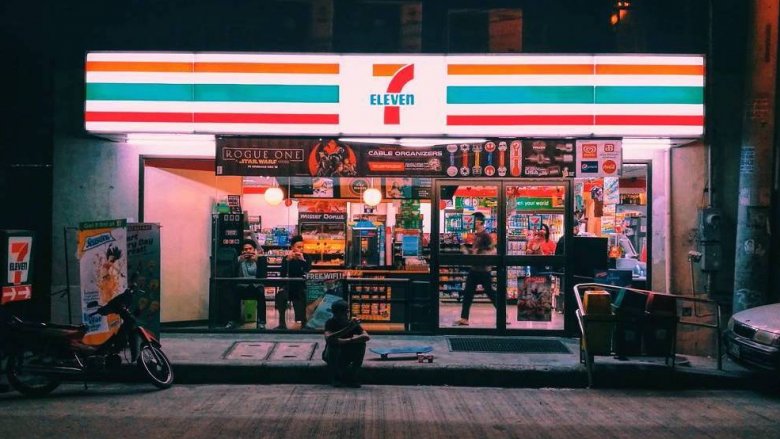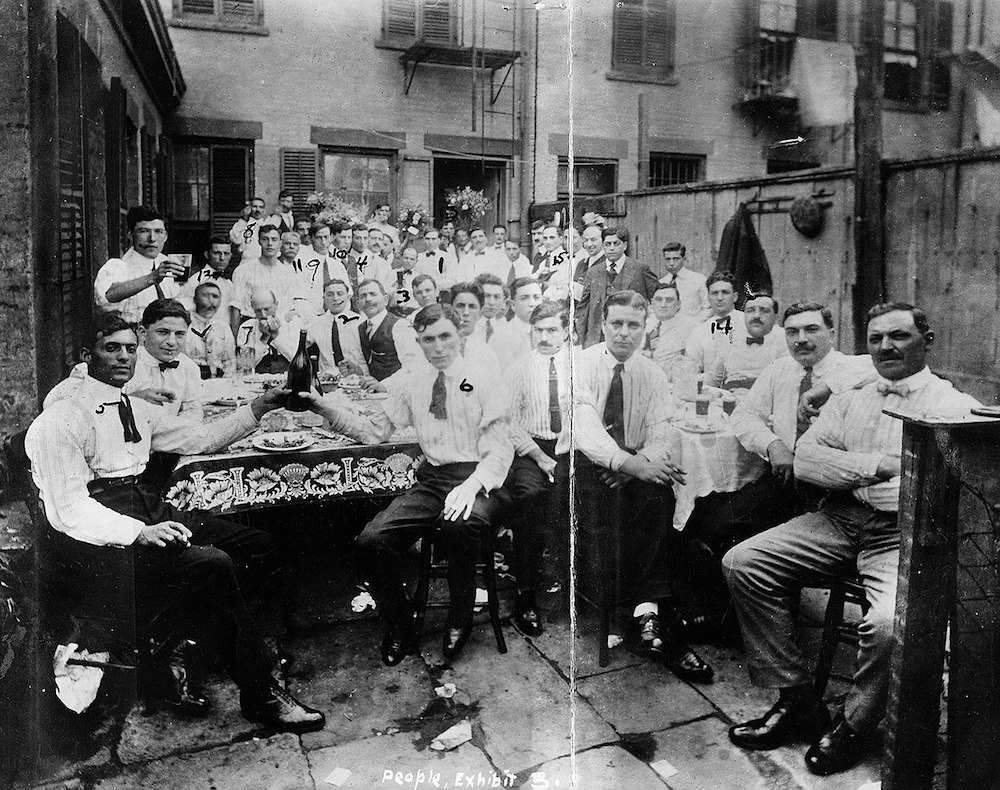The Squirting Pussyvinegar and baking soda volcano is a science fair classic, but making science fun for your kids can mean a lot more than making a mess of your kitchen.
If you're looking for a way to bring more science into your home, there are plenty of fun and even delicious ways to get kids excited about biology, chemistry, and physics — without a single worksheet.
Check out these 11 science projects for kids that are perfect for hands-on learning.
What kids will learn about: non-Newtonian fluids
While this might seem like a big task, you've likely done this before. When you slowly mix about 10 parts cornstarch to one part water, you create a liquid with the consistency of honey, and the properties of quicksand.
This is how it works: When you mix the cornstarch into the water, you create a suspension, which is when one substance is dispersed inside another. This makes the mixture act like a solid when pressure is applied, and a liquid when it's allowed to flow freely.
If you smack, slap, or scoop the mixture, it will feel solid since you'll be pushing the cornstarch particles closer together. Slowly run your fingers through it or pour it out, and it will flow like a liquid.
These mixtures are called non-Newtonian fluids, referring to Isaac Newton's observation that substances typically become more fluid when they're heated and viscous when they're cooled. Those substances, like honey, are Newtonian fluids.
Since the cornstarch goop's consistency is affected by pressure as well, it's considered a non-Newtonian fluid. Quicksand — a suspension of sand in water — works the same way.
What kids will learn about: dinosaurs
There are plenty of cool ways to use science to create food — and we'll get to one later — but sometimes all you need is a cake to start an appetite for knowledge.
These paleontology-themed pastries don't automatically teach your children anything about dinosaurs, but it can be a delicious way to get them interested in learning more. Use them as a way to keep their attention as you teach them about the lizards that once ruled the Earth.
The above video shows how to make a very cool cake which lets kids brush aside cookie crumbs to reveal a dinosaur fossil. If you're after something a bit simpler with less potential for mess, you can also decorate a cake with a few fossil toys.
What kids will learn about: electromagnetism
Making an electromagnet is a middle school science-class staple, and it's an easy project to do with a few small items from a hardware store. Simply wrap copper wire around a nail, connect the ends of the wire to a battery, and watch the magnetic magic unfold.
The magnetic field gets amplified with each additional loop around the wire, and your kids can test out different wire gauges, lengths, and materials to see which will make the strongest magnets.
What kids will learn about: surface tension
Surface tension is a tricky concept to explain to younger children, but an easy and engaging thing to show them.
Here's how to do the pepper soap trick you've probably seen all over the internet:
Sprinkle a bunch of pepper on the surface of a bowl of water,
Then have a kid dip her finger in dish soap
Next, gently touch the surface of the water.
The pepper will jet to the edge of the bowl because the soap broke the surface tension of the water. Tah-dah!
Surface tension is the result of the surface-level molecules of water being pulled downward by attraction to other molecules. This holds them in place and allows particles like pepper to float on them.
Because soap is another highly attractive substance, it will pull the water molecules near it and break the surface tension. This flings the pepper particles out to the edges of the bowl, where the surface tension remains.
You can also do the same experiment with milk and food coloring.
What kids will learn about: what DNA looks like
This might sound deceptively tricky, but with some household supplies and a little bit of lab equipment, you can help show your kids what DNA looks like. The video above walks you through the whole process, which involves breaking down the subject, using salt and meat tenderizer to release the DNA, and extracting it with alcohol.
An individual DNA molecule would be too small to see with the naked eye, but this experiment makes the long, sticky stands visibly tangle together.
What kids will learn about: air pressure and vacuums
This is a surefire way to wow your kids with nothing more than a hard-boiled egg, a glass bottle, a lighter, and some paper. Take strip of paper, light it on fire, put it inside a glass bottle, and let the smoke reach the brim. As soon as it does, place the egg narrow-side down at the mouth of the bottle, and it will slowly get sucked into the bottle.
As the smoke fills the bottle and it heats up, the air inside expands. Once the flame is cut off by the egg's seal of the bottle, the air begins to cool and contract, creating a vacuum that sucks the egg in.
If you can't stand the smell of hard-boiled eggs or can't find the right size bottle, you can use balloons instead.
What kids will learn about: the vascular system of flowers
It's not the quickest science experiment, but it might be one of the coolest. Take a few white carnations, vases and different types of food coloring. Dye the water, then place the flowers in the different vases to watch them change color day by day.
You can even split stems to color one side of the carnation and not the other, or color it two different colors.
What kids will learn about: molecular gastronomy
At its core, molecular gastronomy is using chemicals and creative cooking methods to create food that flips its usual form and function on its head. More home chefs have been trying out these techniques over the past few years, and you can join them by using a little bit of methyl cellulose to make a hot ice cream that melts as it cools.
Methyl cellulose is a derivative of plant cell walls, and creates gels only when it heats up. The recipe in the video above shows you how to make it yourself, and you can get the key ingredient for as cheap as $7.99.
What kids will learn about: air and pneumatic pressure
This modern adaptation of a first-century Alexandrian fountain is a great way to introduce kids to air and pneumatic pressure. Water and air pressure are moved through a series of tubes, which draw water down from the top, through the bottom, and up to the top again.
Rayleigh scattering is what happens to light when it passes through the atmosphere. As light travels from the sun to Earth, it's absorbed and emitted by tiny particles, which scatter white light into different colors. Blue and violet are scattered the most, and because the sun emits more energy as blue light (which our eyes pick up better), our sky looks blue.
You can replicate this effect with a glass of water, milk, and a flashlight. Shine the light into the glass of water as you slowly add drops of milk. Once there are enough protein and fat particulates from the milk in the glass, the water will look blue.
What kids will learn about: crystallization
If the dino cake and hot ice cream weren't enough, you can teach your kids all about crystallization with some rock candy. Simply mix sugar into water until the sugar stops dissolving. Then, tie a clean string to a butter knife laying across the top of a glass and pour in the solution.
Keep the glass covered with a paper towel or plastic wrap to keep out bacteria, and watch the crystals grow each day.
What kids will learn about: calcium in bones
Like the carnation experiment, this science experiment takes a bit of time. However it's also incredibly simple — and a great excuse to order some fried chicken.
Simply immerse a clean, dry chicken bone in a jar of vinegar and leave it to soak for a week. Take the bone out, and you should be able to bend it fairly easily. This is due to the vinegar dissolving the calcium, which is what makes bones rigid. It's a great way to demonstrate to kids why they need to drink their milk or eat other calcium-rich foods.
And remember: all these science experiments for kids should be fun. They don't need to know they're learning something amazing and new.
And if you're looking for even more ways to keep your kids entertained at home:
STEM toys for kids
20 DIY projects to help you (or the kids) stay sharp while at home
BONUS: 5 Fun Science Experiments for Kids (w/ Grover!)
This story was originally published in 2014 and updated in 2020. Additional reporting by Amanda Yeo.
 Best IPL deal: Save $80 on Braun IPL Silk·Expert
Best IPL deal: Save $80 on Braun IPL Silk·Expert
 The best Grok interactions according to users on X
The best Grok interactions according to users on X
 Participating in the American Theater of Trauma by Patrick Nathan
Participating in the American Theater of Trauma by Patrick Nathan
 Why we love watching private chefs in the Hamptons
Why we love watching private chefs in the Hamptons
 Apple MacBook Air deal: $899 at Best Buy
Apple MacBook Air deal: $899 at Best Buy
 Wisconsin vs. U of A basketball livestreams: Game time, streaming deals, and more
Wisconsin vs. U of A basketball livestreams: Game time, streaming deals, and more
 Running into My Dead Mother at 7
Running into My Dead Mother at 7
 Wordle today: The answer and hints for December 9
Wordle today: The answer and hints for December 9
 Best charger deal: Get an Insignia charger for $39.99
Best charger deal: Get an Insignia charger for $39.99
 Nishioka vs. Alcaraz 2025 livestream: Watch Australian Open for free
Nishioka vs. Alcaraz 2025 livestream: Watch Australian Open for free
 Gangster Bedtime Stories by Rich Cohen
Gangster Bedtime Stories by Rich Cohen
 Other People’s Photographs by Lucy Sante
Other People’s Photographs by Lucy Sante
 Bored Ape NFT investors sue Yuga Labs after NFT values crater
Bored Ape NFT investors sue Yuga Labs after NFT values crater
 Winter storm: See snow totals for Florida, Texas and other states online
Winter storm: See snow totals for Florida, Texas and other states online
 Match Group leans into AI with new team
Match Group leans into AI with new team
 Running into My Dead Mother at 7
Running into My Dead Mother at 7
 Redux: In Memoriam, Susannah Hunnewell by The Paris Review
Redux: In Memoriam, Susannah Hunnewell by The Paris Review
 Wisconsin vs. U of A basketball livestreams: Game time, streaming deals, and more
Wisconsin vs. U of A basketball livestreams: Game time, streaming deals, and more
A teen made a website where kittens punch Trump. So, Trump unleashed his lawyers.Kellyanne Conway's tweet about Hillary's emails is coming back to haunt herLorde, Chance the Rapper and the Killers will headline LollapaloozaDetailed security footage shows the alleged journey of Tom Brady's stolen Super Bowl jerseyJenny Slate gets super honest about her relationship with Chris Evans in new interviewSupreme Court nominee Neil Gorsuch was just tripped up by a horseIn a first for U.S., this bumblebee is now officially 'endangered'#DeleteUber campaign inspired 500,000 to delete accounts in one week: NYTimesThis train7 features to look forward to in Android ODance on top of the (very high) Sydney Harbour Bridge like no one's watching'Power Rangers' features a superhero on the autism spectrum'Power Rangers' features a superhero on the autism spectrumTwitter finally finds a way to silence Piers Morgan — and for a good causeChuck Barris, creator of 'Gong Show,' dies at 87The GOP is terrible at playing 'Dungeons & Dragons,' if you believe the internetCanada might follow the U.S. and U.K. with flight 'laptop ban'Google Maps adds location sharing so you can keep track of late friendsCritical LastPass security hole would allow hackers to steal your passwordsPray for the Cadbury social media manager who's frantically fending off trolls Pray Like Aretha Franklin by Michael Robbins Mermaids and Transgressive Sex: An Interview with Alexia Arthurs Holy Disobedience: On Jean Genet’s ‘The Thief’s Journal’ My Withered Legs by Sandra Gail Lambert Pop Songs Written by Native Speakers of Swedish Best laptop deal: The ASUS Zenbook 14X OLED touchscreen is under $500 All the best Cyber Monday deals on Sony headphones and earbuds Staff Picks: Film Forum, Fallout Shelters, and Fermentation Best early Cyber Monday Roomba deals at Amazon 2023 Father's Day memes to share on dad's big day: The funny and true jokes for your pops Staff Picks: Jewel Thieves and Drunken Companions by The Paris Review TikTok launches new music discovery hub 35+ headphone deals from Amazon's Cyber Monday sale Satirizing Identity Politics: An Interview with Lexi Freiman The Historical Future of Trans Literature Redux: Writers at Play by The Paris Review Joan Morgan, Hip Coyote Doggirl in “Nice to Be Alone” Seven Books I’ll Never Read On Renee Gladman’s Turn to Drawing
1.8935s , 8254.265625 kb
Copyright © 2025 Powered by 【Squirting Pussy】,Exquisite Information Network